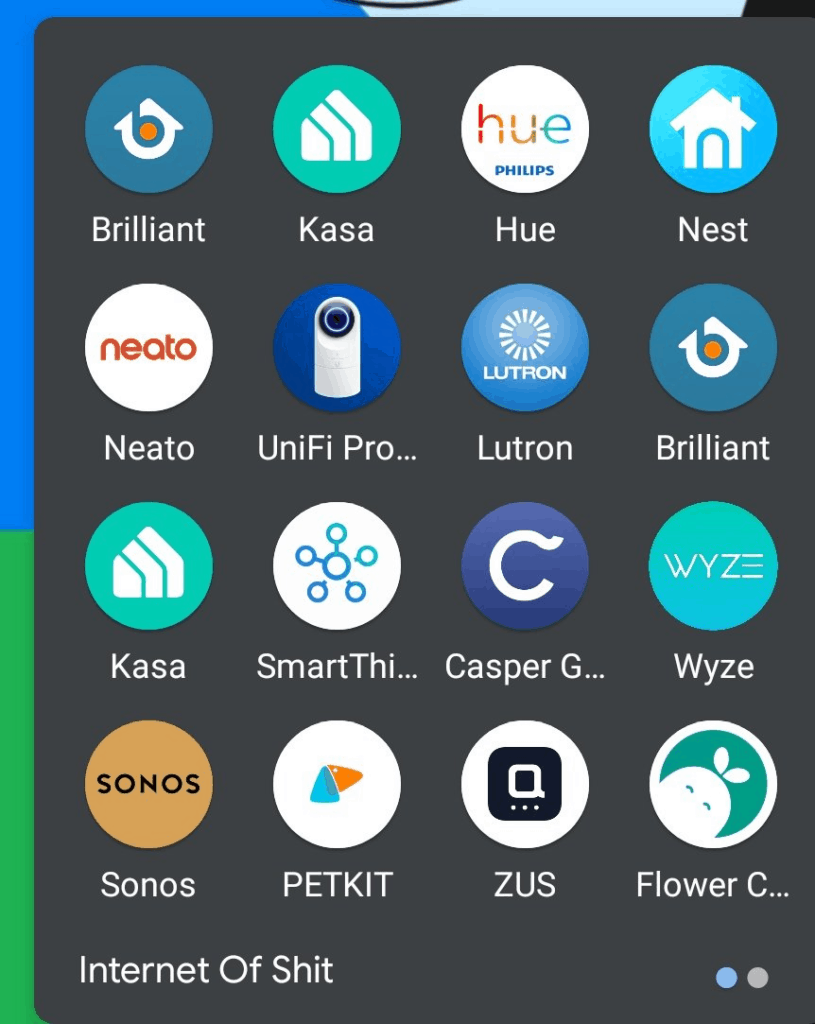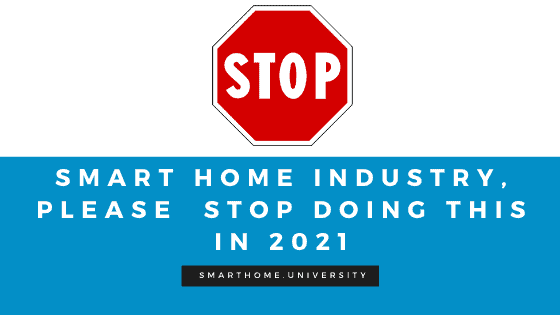- Its going to be a glorious year for the smart home industry in 2012. Wait what? Exactly, it is 2022 already but the smart home industry is actually might be shrinking this year
- A good question is why. It all becomes simple when we look at the reasons. They are mostly the same: it is still expensive, frustrating, and not secure to have a smart home.
- In this article, we are looking into things we (in the smart home industry) should stop doing to change this.
- In addition to stating the problem, we will explore examples where the industry did well in solving those but also give other options on how to improve things
We will look at the problem from two angles – software and hardware. Both are equally important but also equally inadequate for consumer demand.
1. Stop making expensive devices – it needs to stay in line with the value
Smart home benefits are well known and obvious for many. Regardless there are many, many and many opinions that the difference in price between smart and not smart devices is just too much.
There is an easy example of that – robot vacuums. An average roomba would cost between $300 (iRobot Roomba i3+ – $399.99) up to $800 (iRobot Roomba i7 – $414.00). At the same time, if you look at BISSELL Cleanview ($106.44) which is one of the best mob with over 22k five star ratings it will only cost you $100. Do we think the smartness of roomba justyfies 3x or 7x difference? Consumers do not think so. It is still somewhat a fasion item, something you will gift your parents on christmas.
At the same time there are some good examples how once expensive items became more affordable and now are almost as wide spread as non-smart ones. Why would you not buy Kasa HS105 Smart Plug ($9.99) ? With it you can switch on things difficult to reach or light up your Christmas tree on the schedule (also check up our automation ideas with smart plugs)
So how can we improve here? I think there are number of things:
- Focus on volume, not margins – stay your eyes on the prize and remember that it is not how much you earn per unit. Creating the community with recognition and becoming a standard will bring you so much more in the long term.
- Open up the eco-system – Do not limit any custom firmware, look at the open-source community hubs, and work with them.
- Embrace competition – Follow the smart camera trend. They went from being astronomically expensive and not great to becoming decent in quality and having great value. Look at our top pick smart camera Wyze Cam 1080p ($48.00). This little buddy is a best seller for a reason, it has all the main features of cameras (Open RTSP protocol, ONVIF, great documentation, and so on)
- Make it local!!!! – cannot emphasize this enough, but this is important. As an example, we love Arlo (AVD1001) Video Doorbell ($54.99) which is probably the best doorbell now. But why no local access? Just looking at the comments on amazon it is clear this is what the customer wants. Luckily there are workarounds, but why not just do it Arlo?
2. No more new apps for each device
It seems to be a minor thing but people really pissed off with that. This probably something primal speaking in us, but having to deal with a separate app for each of your devices is just stupid.
Have a look at this great example from @internet of shit

What are solutions? It is difficult to come with but there are couple:
- Do not demand everybody to register in your system. If a user wants just to onboard the device she might not need to log in. Use google or Facebook if you must.
- Should we come up with the industry onboarding app? I am not a google fanatic, but surely somebody should come up with one?
3. No more new standards with limited interportability
I had a dream once. In that dream, I could buy any device and it will be instantly working with any other smart device. Also, it will be energy efficient, secure, have great bandwidth, and be capable of mesh. And then I wake up to our grim reality.
There were many promises – Google come up with Weave, Apple came up with HomeKit, Zigbee Alliance came up with Zigbee 3.0. They all looked great, but what they really did is only created fragmentation in smart home protocol industy. Xkcd has a great one for us on the topic.

Then 2020 happened and things started changing. Z-wave suddenly became open source but this might be a bit late as the new (hopefully last) smart home protocol. It is called CHIP, and there are a nubmer of reasons for hope.
- Device producers are engaged and part of it. The list includes Amazon, Apple, ASSA ABLOY, Comcast, Google, Huawei, IKEA, The Kroger Co., LEEDARSON, Legrand, Lutron Electronics, NXP Semiconductors, Resideo, Schneider Electric, Signify (formerly Philips Lighting), Silicon Labs, SmartThings, Somfy, STMicroelectronics, Texas Instruments, Tuya, and Wulian
- It is IP based meaning it will be easier to integrate
- Open-source which again suggests things will be easier to change and contribute
- Led by a reputable and experienced organization which is Zigbee alliance.
4. Stop focusing on the remote control and do more automation (also stop the UI obsession)
This one is really frustrating to me and probably one of the main issues why smart homes are still a bit dumb. Yes, we are excited that we can switch off lights from anywhere in the world and you can press the button on your iPhone and turn on your AC. The question is why do we need a human to do that? Can we not think of logic that will prevent any manual steps?
Another symptom is the obsession with UI and apps. It is really great that you have those widgets, floorplans, and dashboards. If it works for your die-hard fanatics that might be amazing but do not forget about the rest of us. Give us easy automation rules which lead us to the solutions below.
The answer is always not that simple – the complicated logic for automation can be used but it requires a) all devices being connected (a good smart hub is a must) b) having good sensors (check out our selection of best sensors) c) a great rules engine. The issue is once you have all three you still need to make sure your user understands how to create those steps.
That is where things fall short. SmartThings is really too simple for that, OpenHub is using Blocky which is almost as good as it can get. Home Assistant might have it all right with Blueprints but it is still a bit too complicated for my sister to use.
I guess the solution here is to continue focusing on use cases and make it as easy as possible to translate this into the automation recipes. We come up with 50+ automation ideas where we try to explain what should and can be used in the real world so that can be a starting point for you.
5. Do not overcomplicate onboarding and first steps
Like in dating, the consumers are quick to decide if the product is a match for them or not. And it all starts with the onboarding process. Check with the following questions:
- Is it difficult to connect to wifi?
- Do I need to register?
- Do I need to update the firmware?
- Do I need to download app at all?
Many positive answers above will deter your consumers away and reduce the acceptance of the product. The latter is really important because you might have won a single person in the household, but unless the whole family (usually including guests, parents, kids, dogs and cats) will be using the system it will remain a hobby.
The case of Home Assistant is really telling – it went a long way from the need to create a text file and place it in the SDCard in order to connect to wifi to a much smoother process. But it is still very complicated. For me, the absolute minimal needs are that my hub is accessible via the internet, and it is not that easy to do even now. I need to do many things including port-forwarding, certificates etc. Why not advertise Nabu-Casa services more? Why not pre-install some add-ons? Still thing to improve.
6. Stop forgetting about privacy and resilience (go for local first approach)
This one is probably has been discussed too many times but still remains the issue. Also, it is one of the reasons why many people are not embracing smart home devices.
Very often we are not sure who listens to what we are saying, knowing when we are at home or invade our privacy in any different ways. At the same time, we still very attached to the cloud mentality. It is great and all, but why not have a fallback option when your devices communicate locally. It will prevent many outages ultimately making your consumers more at ease with security as well as less frustrated with things not working.
Do you agree with this things? Please leave your comments below or connect with me on @SmartHome.uni
Last update on 2024-04-26 / Affiliate links / Images from Amazon Product Advertising API
